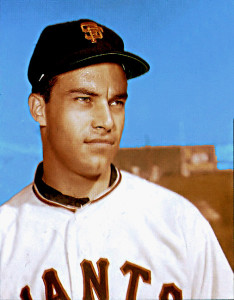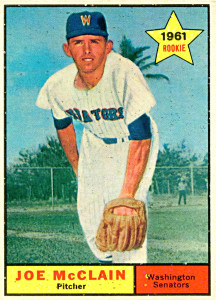As Major League Baseball’s top players compete in July 12’s annual All-Star Game in San Diego, fans are sure to marvel at the talent on display, and might reminisce about pickup games on city sandlots or rural pastures in their youth. But between the towering branches of the elite and the roots in countless backyard or schoolyard diamonds are the sturdy limbs of organized baseball, the minor leagues where skills grew.
Mid-summer is a great time to appreciate the area’s past professional baseballers playing on teams long before today’s Peoria Chiefs or the venerable Sunday Morning, before the sometimes-overlooked Central Illinois Collegiate League or the decades-old Kickapoo Valley League – even the Peoria Chiefs 60 years ago this summer. After all, despite the game’s current commercialization, its heritage helps it endure.
“The strongest thing that baseball has going for it today are its yesterdays,” said baseball scholar Lawrence Ritter (“The Glory of Their Times”).
First, Peoria’s professional baseball goes back more than a century. In the 1800s Peoria teams had a couple of pitchers who went on to the Hall of Fame. Charley “Old Hoss” Radbourn was a pitcher and outfielder with the Peoria Reds, who played at Lakeview Park, before joining the Major Leagues in 1880. Also, Joe “Iron Man” McGinty pitched for the Peoria Distillers in 1898 before setting an MLB record for innings pitched in one season (434 for the New York Giants in 1903).
Between 1909 and 1913, the area was well-represented in the Class-D Illinois-Missouri League, according to the late Jerry Sea, who wrote “The History of Professional Baseball in Pekin.” Its teams included the Pekin Celestials, Monmouth Browns, Macomb Potters and Galesburg Hornets. That squad included Grover Cleveland Alexander, who went on to win 373 games with a lifetime 2.56 Earned Run Average in a 20-year career before being named to Baseball’s Hall of Fame in 1938.
In Peoria, the 1956 Chiefs – playing at Woodruff Field as a Cardinals affiliate in the Class-B Three-I League – finished the season in 4th place with a 58-58 record, but on its roster were two pitchers who’d make it to the big leagues, even if their stints were short. That Chiefs team’s batting leader was Bob White (with a .309 batting average), but 6-foot, 183-pound pitcher Joe McClain did well as a hitter, too, finishing with the second-best BA, .286 in 77 games.
The Chiefs’ ERA leader was Harvey Cohen (with a 3.00 ERA), but right-hander Don Choate also made an impression, with 2 saves in 14 appearances, holding opponents to one home run in 29 innings.
By 1961, McClain, from Johnson City, Tenn., was with the Washington Senators, where he went 8-18 with a 3.86 ERA. Sent down to Triple-A Syracuse in 1962, he returned to Washington later that summer but struggled, finishing that year with a 0-4 record in 24 innings.
Choate, from Patosi, Mo., in 1960 was brought to the San Francisco Giants in a September call-up for “a cup of coffee,” as it’s said. He pitched eight innings in a two-week span, finishing with a 2.25 ERA. The Giants traded him back to the Cardinals, who sent him to Triple-A Portland, where he appeared in 38 games before retiring.
Unlike “Iron Man” and “Old Hoss,” Choate and McClain never came close to Cooperstown, but unlike most of the players in the minors, they were successes. They saw action in MLB stadiums. 
New York poet and journalist Joel Oppenheimer in the Village Voice wrote, “We’ve seen and will keep seeing the history of baseball, and that’s a comforting thought. It lends a continuity to life which allows you to believe that the past really happened in a time when you ain’t quite sure of it.”

Recent Comments